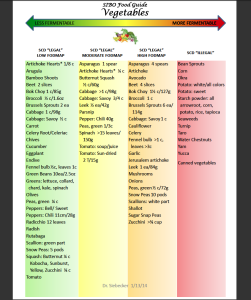What do your Mitochondria influence Quality of Life?
Let’s start with some key definitions to understand the high and why…
Mitochondria are double-membraned organelles found in most eukaryotic cells.
They are often described as the “powerhouses of the cell” because they generate the majority of the cell’s supply of adenosine triphosphate (ATP), which is used as a source of chemical energy.
In addition to energy production, mitochondria are involved in various other processes, including signaling, cellular differentiation, cell death, as well as the control of the cell cycle and cell growth.
Definition of Mitochondrial Biogenesis
Mitochondrial biogenesis is the process by which cells increase their individual mitochondrial mass and copy number to increase energy production. This process involves the coordinated expression of nuclear and mitochondrial genomes and the synthesis of mitochondrial proteins, lipids, and other essential components. Key regulators of mitochondrial biogenesis include peroxisome proliferator-activated receptor gamma coactivator 1-alpha (PGC-1α), nuclear respiratory factors (NRFs), and mitochondrial transcription factor A (TFAM).
Definition of Mitochondrial Capacity and How to Increase It
Mitochondrial capacity refers to the ability of mitochondria to produce ATP through oxidative phosphorylation. This capacity is influenced by the number, size, and efficiency of mitochondria within a cell.
To increase mitochondrial capacity, one can:
- Exercise: Regular physical activity, especially aerobic exercises like running, cycling, and swimming, stimulates mitochondrial biogenesis and enhances the efficiency of existing mitochondria.
- Diet: Nutritional strategies, such as calorie restriction and a diet rich in polyphenols (e.g., from berries, nuts, and dark chocolate), can promote mitochondrial biogenesis.
- Supplements: Certain supplements, such as coenzyme Q10, omega-3 fatty acids, and resveratrol, may support mitochondrial function.
- Cold Exposure: Regular exposure to cold temperatures can stimulate the production of brown adipose tissue, which is rich in mitochondria.
Definition of Mitochondrial Density and How to Improve It

- Mitochondrial density refers to the number of mitochondria per unit volume of the cell.
- Higher mitochondrial density generally correlates with increased cellular energy capacity and improved metabolic efficiency.
To improve mitochondrial density:
- Exercise: Similar to increasing mitochondrial capacity, consistent aerobic exercise can enhance mitochondrial density.
- Intermittent Fasting: Periods of fasting can trigger adaptive cellular responses that increase mitochondrial density.
- Nutrient Timing: Ensuring adequate nutrient intake around periods of high energy demand (e.g., before and after exercise) can support mitochondrial biogenesis and density.
Definition of Mitophagy and How to Improve It
Mitophagy is the selective degradation of mitochondria by autophagy. It is a quality control mechanism that removes damaged or dysfunctional mitochondria, thereby maintaining cellular health. This process involves the encapsulation of defective mitochondria by autophagosomes, which then fuse with lysosomes to degrade the mitochondrial contents.
 To improve mitophagy:
To improve mitophagy:
- Exercise: Physical activity has been shown to enhance mitophagy, helping maintain mitochondrial quality.
- Diet: Certain diets, like calorie restriction or ketogenic diets, can stimulate mitophagy.
- Phytochemicals: Compounds such as polyphenols (e.g., resveratrol, quercetin) can activate pathways that promote mitophagy.
- Supplements: Some supplements, such as spermidine, have been shown to enhance autophagy and mitophagy.
In summary, mitochondria are crucial organelles for cellular energy production, and their function and efficiency can be enhanced through various lifestyle interventions, including exercise, diet, and certain supplements.
Exercise and Mitochondrial Biogenesis
To create new mitochondria, specific types, intensities, durations, and frequencies of exercise are particularly effective. Here are the details:
Type of Exercise
- Aerobic Exercise: Activities such as running, cycling, swimming, and brisk walking are most effective at stimulating mitochondrial biogenesis. These exercises rely on sustained, rhythmic movements that increase oxygen consumption and demand energy production over extended periods.
Intensity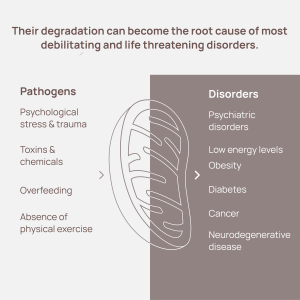
- Moderate to High Intensity: Exercises performed at 60-85% of your maximum heart rate are ideal. High-intensity interval training (HIIT), which alternates short bursts of intense exercise with periods of rest or low activity, is particularly potent for mitochondrial biogenesis.
Duration
- At least 30 minutes per session: Sustained aerobic activities for at least 30 minutes per session are necessary to stimulate the cellular pathways that promote mitochondrial biogenesis.
Frequency
- 3-5 times per week: Regular exercise sessions, spaced throughout the week, ensure continuous stimulation of mitochondrial biogenesis. Consistency is key for long-term adaptations.
Exercise for Improving Mitochondrial Capacity
Type of Exercise
- Aerobic and HIIT: Both continuous aerobic exercise and HIIT are effective at improving mitochondrial capacity.
Intensity
- Moderate to High Intensity: Exercise performed at moderate to high intensity challenges the mitochondria, improving their efficiency and capacity.
Duration and Frequency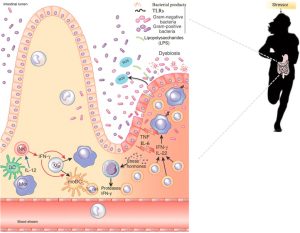
- Similar to those for biogenesis: Regular, consistent exercise sessions of at least 30 minutes, 3-5 times per week.
Definitions
Mitochondrial Capacity
Mitochondrial capacity refers to the ability of mitochondria to produce ATP through oxidative phosphorylation. It is a measure of how effectively mitochondria can meet the energy demands of the cell. This capacity is influenced by the number, size, and efficiency of mitochondria.
Mitochondrial Function
Mitochondrial function encompasses the overall performance of mitochondria, including ATP production, regulation of cellular metabolism, generation of reactive oxygen species (ROS), and involvement in cellular signaling and apoptosis. Healthy mitochondrial function is crucial for energy metabolism and cellular health.
Mitochondrial Density
Mitochondrial density refers to the number of mitochondria per unit volume of the cell. Higher mitochondrial density generally correlates with increased cellular energy capacity and improved metabolic efficiency. Increasing mitochondrial density typically involves stimulating mitochondrial biogenesis through regular exercise and other interventions.
Summary
- To create new mitochondria and improve their capacity, engaging in regular aerobic exercise and high-intensity interval training (HIIT) is essential.
- Moderate to high-intensity workouts performed for at least 30 minutes, 3-5 times per week, stimulate the necessary adaptations.
- Understanding mitochondrial capacity, function, and density helps to appreciate the cellular mechanisms underlying these benefits and guides effective exercise regimens for enhancing cellular health.
What is The GOLDILOCKS Effect for the ideal dose of exercise?
Research on the Ideal Dose of HIIT and Zone Two Exercise
To stimulate mitochondrial biogenesis and improve mitochondrial capacity without overtraining or causing excessive oxidative stress, both High-Intensity Interval Training (HIIT) and Zone Two exercise (moderate-intensity aerobic exercise) are highly effective.
Here’s what research suggests about the ideal dose for each:
High-Intensity Interval Training (HIIT)
HIIT involves short bursts of intense exercise followed by recovery periods.
- Frequency:
- 2-3 times per week.
- Duration:
- Each session should last about 20-30 minutes.
- Intensity:
- Work intervals should be performed at 85-95% of maximum heart rate.
- Recovery intervals can be at 50-70% of maximum heart rate.
- Zone 4/1 for HIIT
- Zone 5/1 for SIT
- Work-to-Rest Ratio:
- Common protocols use a work-to-rest ratio of 1:1 or 2:1. For example, 30 seconds of intense exercise followed by 30 seconds of rest, or 30 seconds of intense exercise followed by 15 seconds of rest.
- Total Number of Intervals:
- Typically 6-10 intervals per session.
Research Findings:
- Studies indicate that as few as three HIIT sessions per week can significantly enhance mitochondrial biogenesis and capacity.
- A study by Gibala et al. found that 6 sessions of HIIT over 2 weeks increased muscle oxidative capacity and doubled the endurance capacity of participants.
- Another study by Little et al. reported that HIIT protocols with shorter duration (e.g., 10-minute sessions including warm-up and cool-down) are effective in stimulating mitochondrial adaptations.
Zone Two Exercise
Zone Two exercise involves moderate-intensity, steady-state aerobic exercise.
- Frequency:
- 3-5 times per week.
- Duration:
- Each session should last 45-60 minutes.
- Intensity:
- Exercise should be performed at 60-70% of maximum heart rate.
- This intensity corresponds to a level where you can maintain a conversation comfortably (known as the “talk test”).
- Steady-State:
- The exercise should be continuous and maintain a steady heart rate within Zone Two.
Research Findings:
- Zone Two exercise is effective for enhancing mitochondrial density and function with lower oxidative stress compared to higher-intensity workouts.
- A study by Holloszy and Coyle demonstrated that prolonged moderate-intensity exercise leads to significant increases in mitochondrial content and respiratory capacity in muscle.
- Additional research suggests that consistent Zone Two training improves oxidative phosphorylation and reduces lactate production, which is beneficial for endurance and metabolic health.
Balancing HIIT and Zone Two Exercise
Combination Training: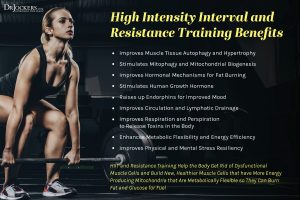
- Weekly Schedule: A balanced training schedule might include 2 days of HIIT and 3 days of Zone Two exercise.
- Recovery: Ensure adequate rest and recovery between high-intensity sessions to prevent overtraining and manage oxidative stress.
- Monitoring: Pay attention to signs of overtraining, such as prolonged fatigue, decreased performance, and increased resting heart rate. Adjust the training intensity and volume accordingly.
Managing Oxidative Stress
- Antioxidant-Rich Diet: Consume a diet rich in antioxidants to help mitigate exercise-induced oxidative stress.
- Adequate Sleep: Ensure sufficient sleep for recovery and mitochondrial repair.
- Hydration: Stay well-hydrated to support metabolic processes and recovery.
Summary
- Both HIIT and Zone Two exercises are effective for stimulating mitochondrial biogenesis and improving mitochondrial capacity.
- By combining these exercise modalities and adhering to recommended doses, individuals can optimize mitochondrial adaptations while minimizing the risk of overtraining and oxidative stress.
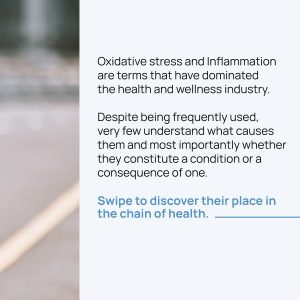
What is the CELL DANGER RESPONSE Theory… and relationship to mitochondria function?
The Cell Danger Response (CDR) theory is a concept in biology that suggests cells react to danger or stress through a coordinated metabolic response designed to protect the organism. This theory, proposed by Dr. Robert Naviaux, posits that cells under threat, whether from infections, toxins, physical injury, or other stressors, undergo a series of metabolic and molecular changes aimed at ensuring survival and restoring homeostasis.
Key Points of the Cell Danger Response Theory
- Metabolic Shift: When a cell detects danger, it shifts its metabolism from a state focused on growth and normal function to one that prioritizes defense and repair. This often involves a switch from oxidative phosphorylation (aerobic energy production in mitochondria) to glycolysis (anaerobic energy production).
- Communication: Cells undergoing the CDR release signaling molecules like ATP, purines, and reactive oxygen species (ROS) to alert neighboring cells and the immune system about the presence of a threat. These molecules act as “danger signals.“
- Protective Mechanisms: The CDR involves the activation of various protective mechanisms, including autophagy (the process of cleaning out damaged cellular components), increased production of antioxidants, and the expression of stress proteins.
- Temporary State: The CDR is meant to be a temporary state that resolves once the threat is eliminated. Cells then shift back to their normal metabolic functions, restoring homeostasis.
- Chronic Activation: Problems arise when the CDR is chronically activated due to persistent stressors or an inability to resolve the initial threat. Chronic CDR can lead to sustained inflammation, cellular dysfunction, and contribute to the development of chronic diseases and conditions such as autism, chronic fatigue syndrome, and various neurodegenerative diseases.
- Role of Mitochondria: Mitochondria play a central role in the CDR because they are both the powerhouses of the cell and key sensors of cellular stress. Dysfunctional mitochondria can perpetuate the danger response, leading to prolonged or maladaptive CDR.
Implications of the Cell Danger Response Theory
- Disease Understanding: The CDR theory provides a framework for understanding how various chronic diseases may develop from an initial acute stressor or injury that fails to resolve properly.
- Treatment Approaches: Therapeutic strategies might focus on identifying and removing the persistent stressors, supporting mitochondrial function, and promoting the resolution of the CDR to restore normal cellular function.
- Research and Medicine: The theory encourages a holistic view of disease, considering metabolic, environmental, and genetic factors, and highlights the importance of mitochondrial health in disease prevention and treatment.
Conclusion
The Cell Danger Response theory is a compelling model that explains how cells react to threats and how chronic diseases may arise from prolonged or unresolved cellular stress responses. By focusing on the role of mitochondria and the importance of restoring cellular homeostasis, the CDR theory provides valuable insights for developing new treatments and preventive measures for various chronic conditions.
Too much of anything… Chronic Stressors


 How PNOE Metabolism Testing Can Guide Training for Improved Mitochondrial Function
How PNOE Metabolism Testing Can Guide Training for Improved Mitochondrial Function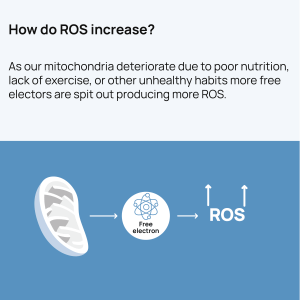 s:
s:
